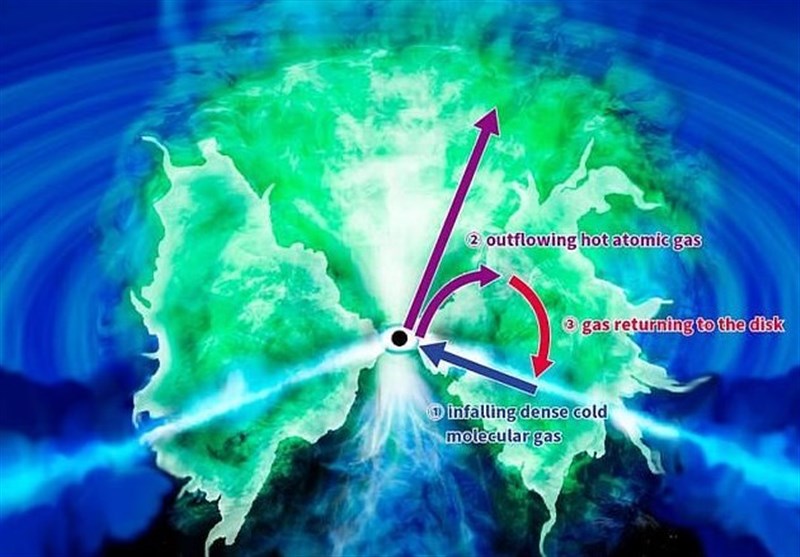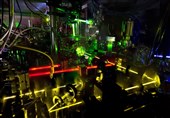Black Holes Resemble Fountains Not Donuts: Astronomers
TEHRAN (Tasnim) - New simulations have revealed that gas surrounding a supermassive black hole spews out from above and below the disk like a three-dimensional fountain.
While it’s long been assumed that the rings of gas around active black holes took on the shape of a donut, researchers say the reality is far more complex.
Simulations and observations from the Atacama Large Millimeter/submillimetre Array (ALMA) suggest the ‘donut’ is actually a more dynamic structure made if three gaseous components that circulate constantly, Daily Mail reported.
In the new study, researchers at the National Astronomical Observatory of Japan (NAOJ) observed the supermassive black hole at the center of the Ciricinus galaxy, roughly 14 million light-years away.
They compared this with a simulation of gas falling toward a black hole, from the Cray XC30 ATERUI supercomputer.
Their findings challenge the conventional idea that matter falling into a black hole builds up around it to form a donut structure.
According to the team, it’s more of a three-step process.
First, the cold gas forms a disk near the plane of rotation, heating up until the molecules break down.
Some of these molecules are expelled above and below the disk. And, this then falls back down to create a fountain-like structure.
‘Previous theoretical models set a prior assumptions of rigid donuts,’ says Keiichi Wada, a theoretician at Kagoshima University in Japan.
‘Rather than starting from assumptions, our simulation started from the physical equations and showed for the first time that the gas circulation naturally forms a donut.
‘Our simulation can also explain various observational features of the system.’






